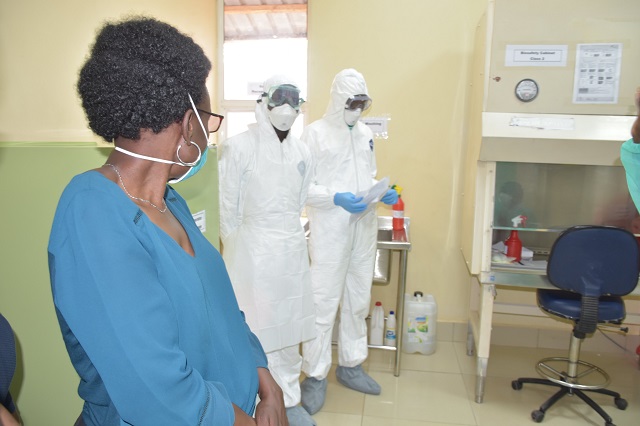
Mutukula, Uganda | THE INDEPENDENT | Uganda will on Wednesday start screening all individuals coming into the country through Uganda – Tanzania border following a confirmed case of Marburg hemorrhagic fever in the neighboring country.
Speaking to URN on Wednesday, Emmanuel Ainebyoona, the Senior Public Relations Officer at the Ministry of Health said top officials in the ministry held a meeting on Tuesday and resolved that screening starts at Kasensero, Kikagati, and Mutukula border points.
Ainebyoona says some of the mobile laboratories that were recently being used in Mubende and Kassanda during the recent Ebola outbreak in the country will be moved to the border to ensure that screening and sample collection are swiftly done.
According to a statement released by the World Health Organisation (WHO) on Tuesday, Tanzania’s National Public Health Laboratory analyzed samples to determine the cause of illness after eight people developed symptoms including fever, vomiting, bleeding, and renal failure in Tanzania’s north-west Kagera region.
Five of the eight cases, including a health worker, have died and the remaining three are receiving treatment. A total of 161 contacts have been identified and monitored.
“The efforts by Tanzania’s health authorities to establish the cause of the disease is a clear indication of the determination to effectively respond to the outbreak. We are working with the government to rapidly scale up control measures to halt the spread of the virus and end the outbreak as soon as possible,” said Dr. Matshidiso Moeti, World Health Organization (WHO) Regional Director for Africa.
However, while this is Tanzania’s first-ever Marburg Disease Outbreak, Uganda has had multiple outbreaks of viral hemorrhagic fever. Like Ebola which the country has just defeated, Marburg which is believed to be spread by monkeys and bats is transmitted through direct contact with blood, secretions, and other bodily fluids of an infected person or animal and it is very contagious.
The first outbreak was reported in the 1960s in Marburg Germany where scientists were conducting a study that involved monkeys from Uganda.
According to the Ministry of Health, in order to manage outbreaks of such infectious diseases that can be fatal, communities need to be vigilant to report any suspected patients immediately to a nearby health facility.
They also warn that individuals including health workers to avoid direct contact with the body fluids of a person presenting with bleeding tendencies or symptoms suggestive of Marburg virus disease in addition to allowing health workers to perform dignified burials among victims who might have succumbed to the disease, so as to minimize its spread to others.
****
URN
 The Independent Uganda: You get the Truth we Pay the Price
The Independent Uganda: You get the Truth we Pay the Price



